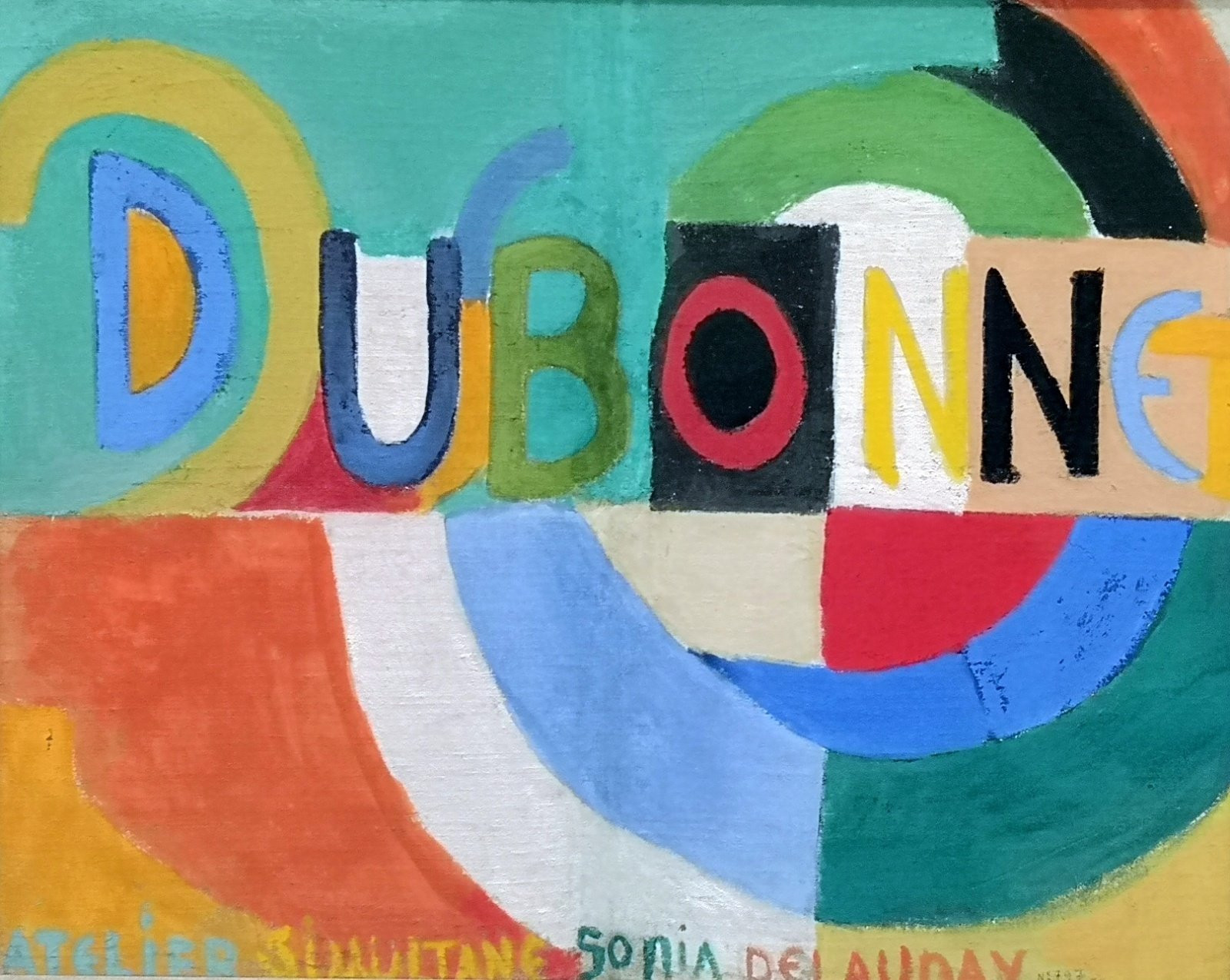

It is no secret that most artistic trends were born in the West. At the same time, the rest of the civilized world perceived the accumulated experience and adapted it to their worldview aspirations. It is not about the talent of the masters but about their inclusion in the rhythms of cultural life, about their ability to foresee and create images of the future. Despite this, artists from countries that adopt the experience of the West have always had a massive space for self-realization and going beyond the established canons. Their bold experiments and original painting style gave their works a unique value.
Our country has given the world more than one generation of geniuses who have significantly impacted world art. Sometimes it was outside the cultural capitals that the intentions of new art trends were fully expressed. Ukraine has always had a special status in this respect: its geographical location made it a bridge between Europe and Asia and created unique conditions for the self-realization of artists.
Oleksandr Arkhypenko
The future artist and sculptor were born in Kyiv in the late 80s of the XIX century. Life in France and Germany allowed him not only to get acquainted with the current trends of the avant-garde but also to take an active part in their development. The formation of the master took place surrounded by such prominent figures of fine art as K. Malevich, O. Exter, P. Picasso, and J. Braque. Art critics consider the most outstanding merit of the genius to be the implementation of the principles of cubism in sculpture.
Archipenko demonstrated to the viewer all the ambiguity of our perception of the world around us with the help of inaccessible "negative space." The master compares the Gothic and Renaissance understanding of plasticity in his works, uses unexpected color solutions, and combines various decorative materials. After moving to the United States in 1923, he developed the principles of kinetic painting.
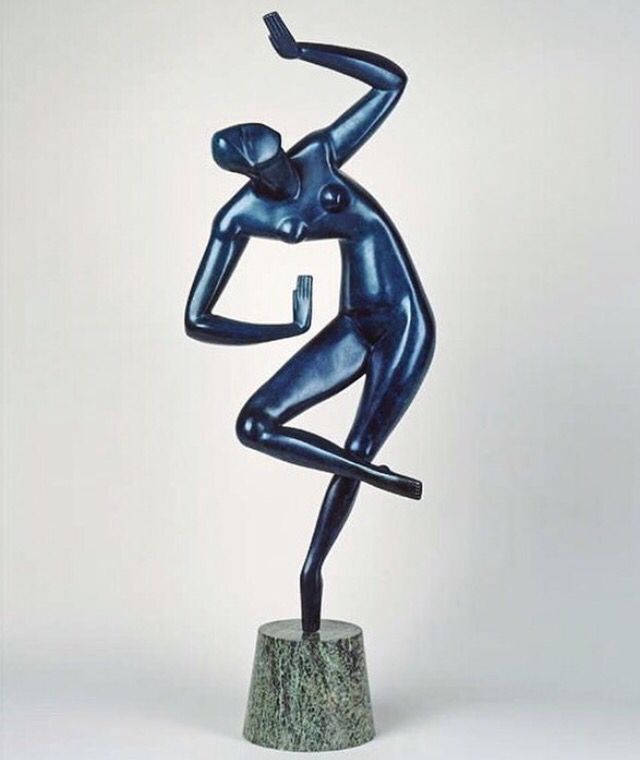
«Blue dancer, by Oleksandr Arkhypenko». Photos © adamovskiy.foundation
The talent of the master can be appreciated in such works as Blue dancer (1913), Carrousel Pierrot (1913), The Boxers (La Lutte) (1914), and Woman with a Fan II 1 (915). Today Archipenko's sculptures and paintings can be seen in museums in the USA, EU, Ukraine, and CIS countries.
Ivan Aivazovsky
The famous marine painter and master of battle painting were born in 1817 in Feodosia. The artist belonged to an ancient and wealthy Armenian family, which allowed him to fully concentrate on developing his talent. World fame and membership in European art academies permitted him to live wherever he wished, but Aivazovsky preferred Crimea. He was connected with the peninsula by childhood memories and his heartfelt love for the sea. He wrote the best works dedicated to the sea element here. The romantic nature of the master every time made itself felt on the canvas: his paintings capture the viewer's soul and delight the eye with the richness of colors. The master's brush also belongs to battle scenes and portraits, but it is in seascapes that he reveals the depth of his talent.
Today Aivazovsky's paintings can be found in the most famous museums in the world. No one has reached greater heights in the genre of marine painting. Among the most famous works of Aivazovsky's brush is worth mentioning: "Night," "After the Storm," "Venetian Night," "Burning Ship," and "Coffee House in the Crimea."
Arkhip Kuindzhi
The future genius was born into a low-income family in Mariupol. Purposefulness and reclusiveness allowed him to realize his talent and achieve worldwide recognition. Among the works that brought the author worldwide fame, experts note "Moonlight Night on the Dnipro," "After the Rain," "Ukrainian Night," "Evening in Ukraine," "Rainbow," and "Ai-Petri. Crimea". The artist masterfully used the techniques of realism and impressionism to establish an emotional connection between the viewer and the picture.
They say those who wanted to see "Moonlight Night on the Dnipro" during the exhibitions lined up in kilometer-long queues. Colleagues noted the extraordinary sensitivity of Kuindzhi's eyes to the subtlest shades of colors.
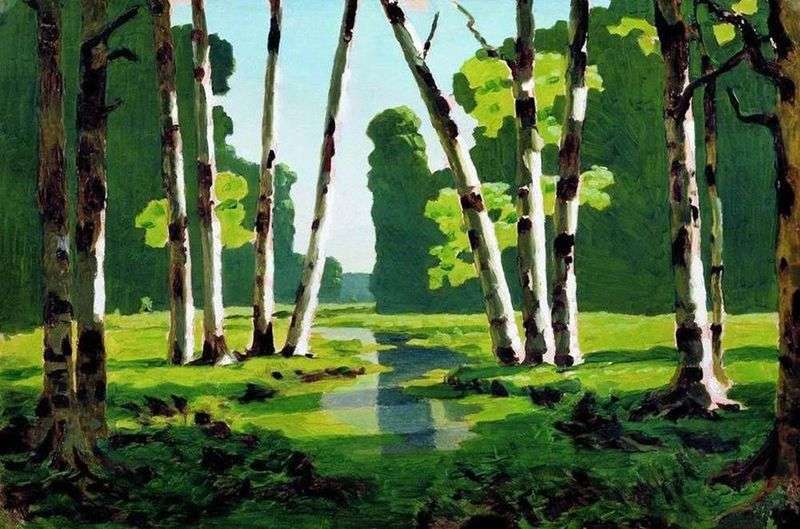
«Birch Grove, by Arkhip Kuindzhi». Photos © jyvopys.com
Special techniques developed by the artist allowed us to realize the coloristic potential of natural landscapes fully. The active use of methods of additional colors and flattening of space will enable us to talk about a new system of decorative plastic developed by Kuindzhi. By the way, the painting "Birch Grove" was sold at Sotheby's for $3.1 million in 2008.
Kazimir Malevich
Not all initiatives of Malevich found a response and understanding among critics. The artist entered the history of art as one of the most radical figures of the avant-garde. The native of Kyiv began his career with neo-primitivism and impressionism. Later he moved on to alogism, cubofuturism, and cubism, but his search did not end there. The genius of Malevich gave the world a new direction - Suprematism. As conceived by the author, the new project was designed to free paints from the dictates of form and open new horizons of acts of "pure creativity."
For example, A. Benoit called the famous "Black Square" a self-affirmation of the abomination of devastation, which conceals itself through pride and leads to death. Today the works of the master can be seen in the expositions of museums in Dallas, Sydney, New York, Washington, and other cities.
Sonia Delaunay
The world-famous artist was born in the village of Hradyzk, Poltava province, at the end of the XIX century. After studying at the art schools of the Russian Empire, the girl moved to Paris, where she married Robert Delaunay. A strong influence on the artist's personality and worldview was made by acquaintance with radical Parisian youth, as well as studying at the La Palette Academy.
For some time, Delaunay experimented with colors within the practice of simultaneity and form according to the canons of cubism. The artist's particular way of depicting geometric shapes was called "Orphism" Guillaume Apollinaire.
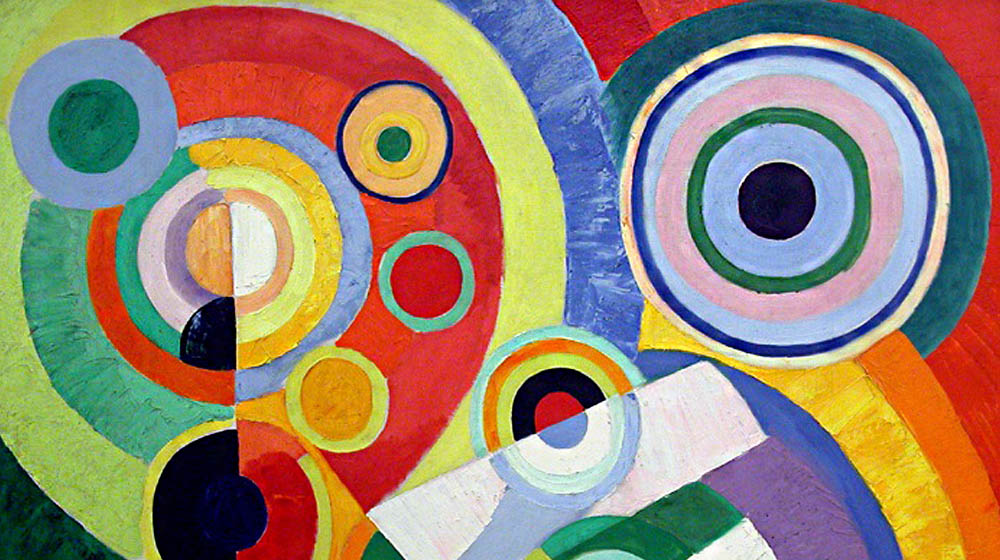
«Painting by Sonia Delaunay». Photos © dhgshop.it
After the First World War, Sonia Delaunay returned to France, where she was actively engaged in painting. She gained popularity and became the only Ukrainian artist awarded a solo exhibition in the Louvre. In 2004, Delaunay's work "Ladybug" was depicted on a postage stamp issued in honor of the Entente's "heart agreement."
Alexandra Exter
The avant-garde artist moved to France from Kyiv. It is said that she was the only person whom Kazimir Malevich let into his studio while working on the foundations of Suprematism. She actively collaborated and was friends with the most famous avant-garde artists of the twentieth century: P. Picasso, Ardengo Soffici, and G. Apollinaire. At different stages of her career, she was engaged in costume design, book illustration, painting, and scenery for the theater.
To this day, excellent book illustrations for books with a circulation of several copies have been preserved: "Ode to Bacchus" by Horace (1937), "My garden" ("Mon Jardin," 1936), "Panorama of the river" ("Panorama du fleuve," 1937), "Panorama of the mountain" ("Panorama de la montagne," 1938).
Yakiv Hnizdovsky
The famous Ukrainian artist was born in 1915 in the village of Pylypche in western Ukraine. He studied at the Warsaw Academy of Arts and received a scholarship from Metropolitan Andrey Sheptytsky. After the events related to the Second World War, he came to the United States. In addition to painting, he devoted a lot of time to graphics: Hnizdovsky was inspired by the works of Albrecht Dürer. The central motive of the artist's work is the creation of pure forms of nature.
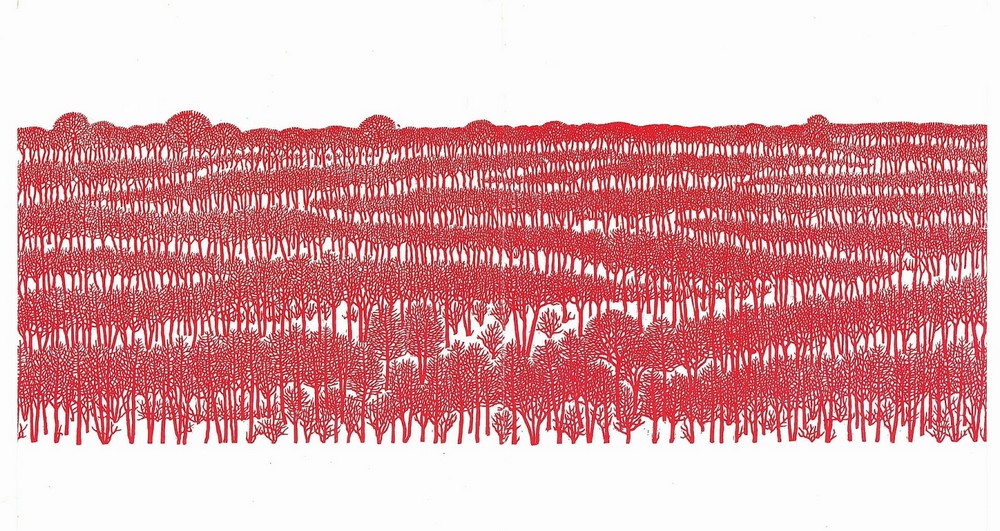
«Winter Landscape, by Yakiv Hnizdovsky». Photos © vorchenok.blogspot.com
In practice, this aspiration was realized by filling the empty spaces of the drawing with a small interweaving of leafless branches. After moving to the United States, Gnizdovsky became interested in Japanese woodblock prints. His works with images of animals and plants appear in botanical gardens and zoos.
Among the most famous woodblock models, one cannot fail to mention a sheep and an orangutan for the Bronx Zoo. Gnizdovsky's paintings were also renowned. During the time of President Kennedy, two of his works hung on the walls of the White House - "Winter Landscape" and "Sunflower."
Ilya Kabakov
The artist was born in 1933 in Dnepropetrovsk. Gray's everyday life in a Soviet communal apartment had a radical influence on all further work of the artist. The motif of loneliness of a "little man" dreaming of freedom is often present in his paintings and installations. In 1957, the artist received the position of illustrator of children's books. In the 80s of the last century, Kabakov was fond of avant-garde installations, where he often used garbage as an artistic material. One of the most famous works of this period is "The man who flew into space from his room."
After the collapse of the USSR, the artist visits foreign countries, exhibiting his works in museums in the EU and the USA. His paintings and installations were exhibited at the Georges Pompidou Center. In 2008, Kabakov's painting "Beetle" was sold for $ 5.8 million. The Emperor of Japan also awarded the merits of master the art prize.
Kateryna Bilokur
Ukrainian self-taught artist was born in 1900 in the village of Bohdanivka in Poltava province. Lack of school education did not allow the artist to enter the College of Art Ceramics, but the desire for beauty overcame all obstacles. Bilokur's passion for art manifested itself in childhood when she secretly from her parents painted images of wildflowers and landscapes with coals on the canvas.
Bilokur found her unique style, which by external signs, most resembles naive art. Since the 40s of the twentieth century, a new stage in the work of the national artist began when local authorities paid attention to her.
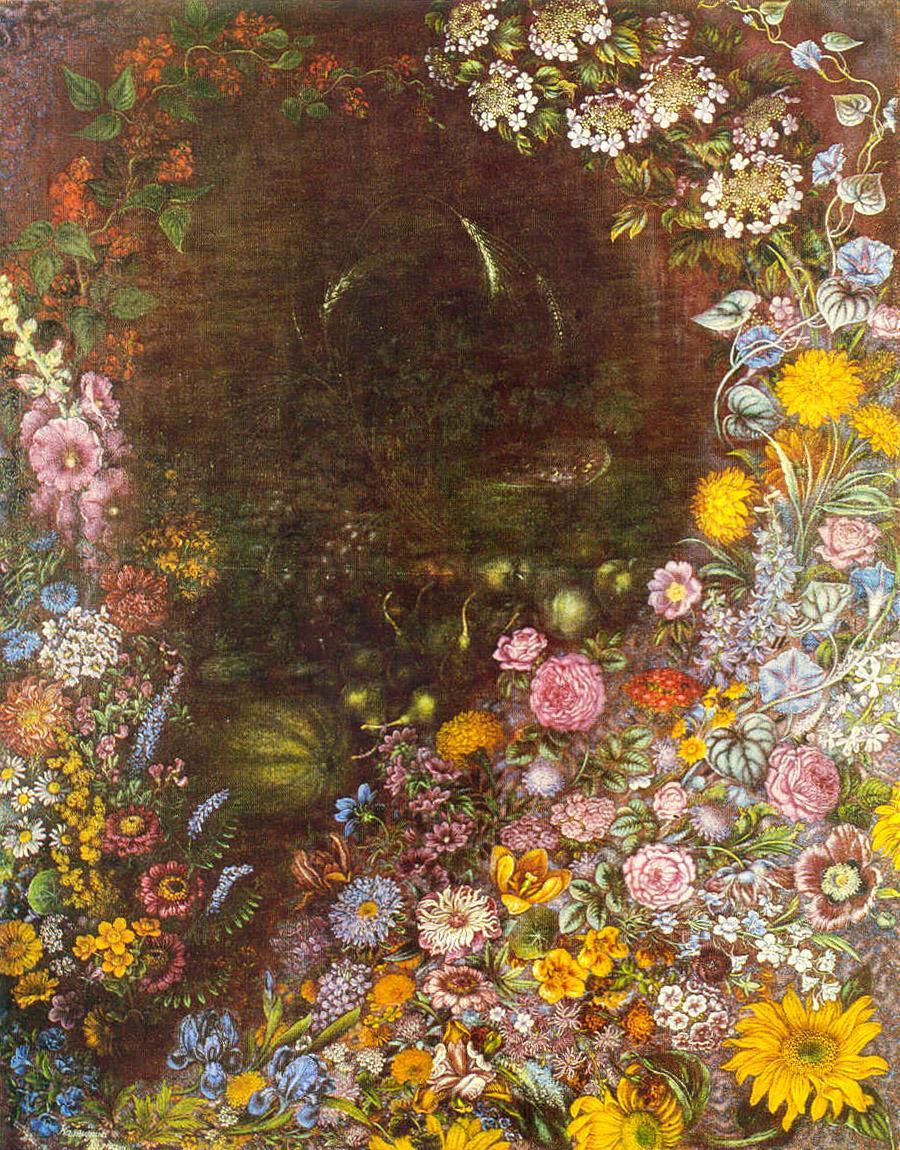
«King-Ear, by Kateryna Bilokur». Photos © uamodna.com
In 1954, her artworks ("King-Ear," "Birch," and "Collective Farm Field") were presented to the European public at an exhibition in Paris. It is said that P. Picasso highly appreciated the artist's talent and was extremely surprised when he found out that the author of the charming paintings did not even have an elementary art education.
Ukraine and the world art discourse
Our masters are actively involved in the development of global culture. An extended period of isolation from the outside world contributed to the accumulation of creative potential and stimulated interest in contemporary art. The fall of the Iron Curtain allowed us to fully realize all the intentions and reunite Ukrainian artists with their colleagues from other countries.
The artworks of Ukrainian artists are exhibited in the world's most famous museums, attracting the interest of connoisseurs and private collectors. The development of the domestic art market in the future will create favorable conditions for the flourishing of art in Ukraine and the transition to a new level of dialogue with world culture.
KyivGallery art critic
